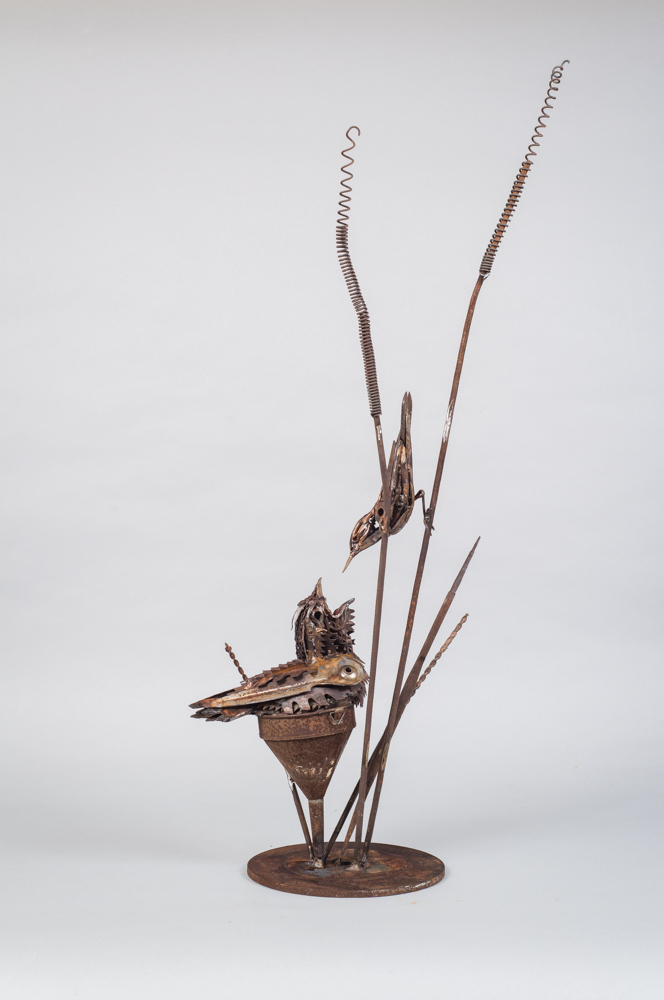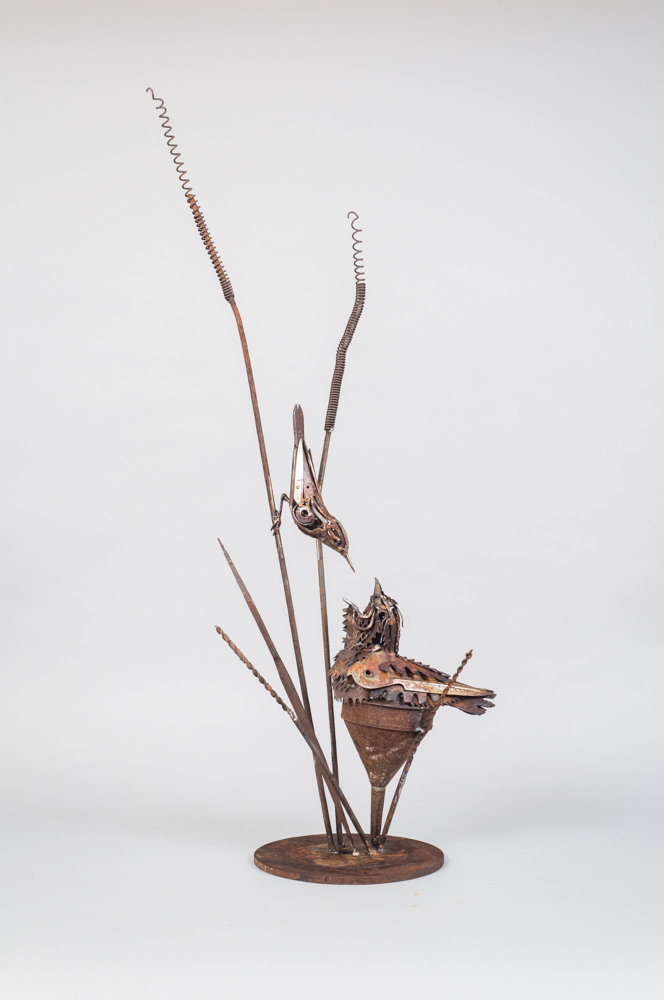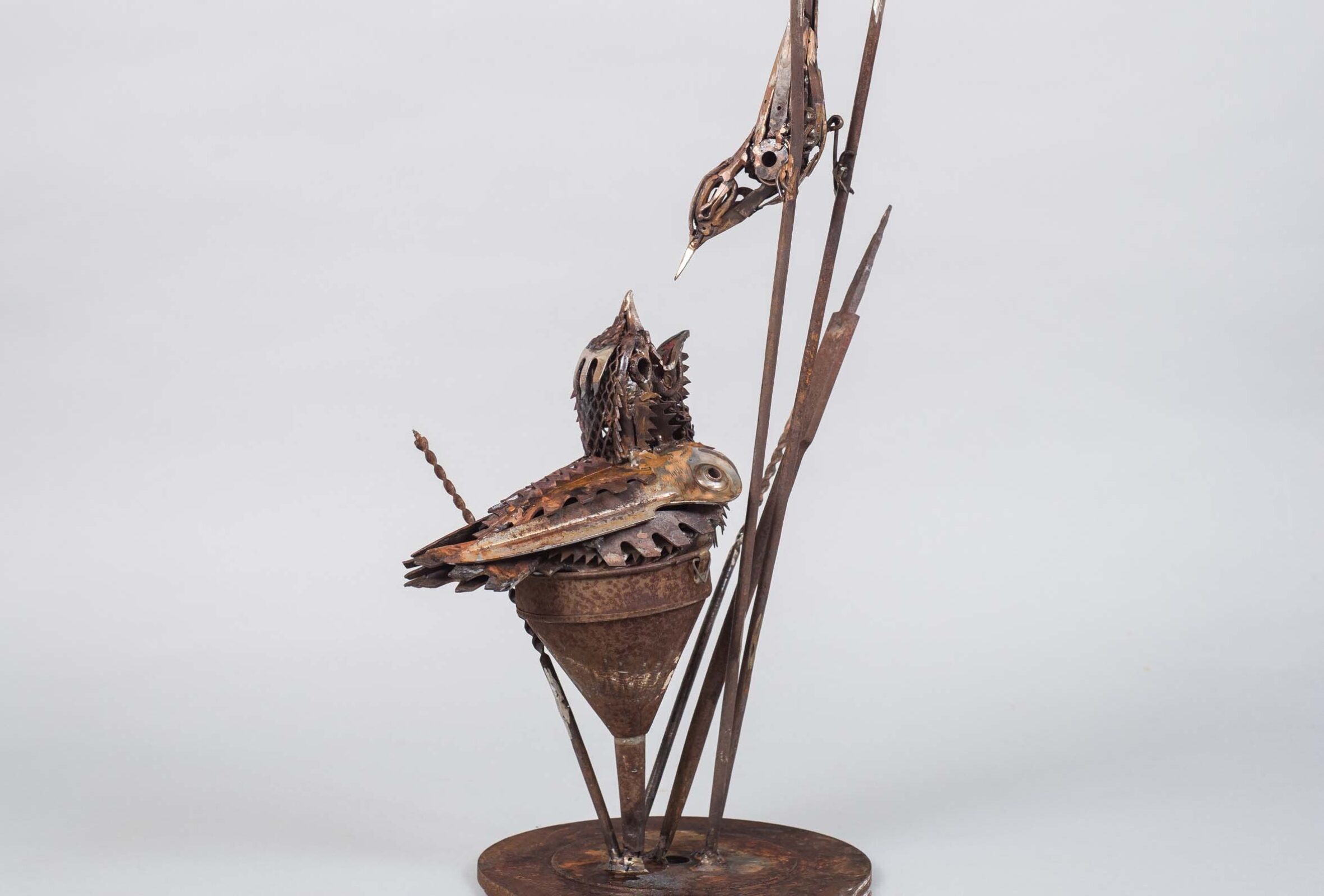BTO/SWLA Flightlines Project 2016 – Funnel

Dave Leech’s reed warbler research has the added benefit of providing detailed data and known sites of cuckoo chicks in the host nests, ideal for us to get up close and personal with these extraordinary birds.
Our first cuckoo was a day old, still sharing the nest with two doomed warbler eggs. Even that small it had a determined edge to it as it flexed its back like a mini weight lifter. Following Dave through the reeds, getting a bird’s eye view of life as a warbler, we came to the second nest. This cuckoo chick was enormous. Only ten days old it sat centre stage: the nest bulging around its sides, its orange gape rising up to beg if we made any movement from above. The bird’s pins were just beginning to erupt into full feathers, silvery shafts with spiky blades at their tips, it already looked like I’d made it from metal. Quickly I scratched some biro sketches in an attempt to capture the alien feel of this corpulent creature, but hearing the occasional contact call from the duped parents, we moved on to let this magnificent interloper get its next feed.
Fast forward a year and I need to make the cuckoo. As ever I didn’t really have a plan and I never sketch things out. I just began with the head and tried to find items to describe the focus of the creature — its gape. Within an hour I’d roughed out the head and found an old pair of garden hand shears that would define the wings. Spiky feathers were easy — old circular sawblades and bow saw blades with a lovely little fork from cheap rusty salad tongs for part of the head.
But how can I set this thing to make any sense? I can’t make a chick without a nest. I scanned around the studio, looking at great piles of scrap tools lodged on every surface and in boxes all around the floor. On one shelf, ladened with treasures such as old wooden skates with rusted blades, sheep shears and flat irons I saw the perfect nest — a funnel.
The cuckoo now had a home but my heart sank. The gape was my downfall. It needed a host parent to feed it. I don’t do tiny birds — welding is not subtle and can totally destroy thin bits of metal. I started looking for scissors tiny enough for a warbler beak. Excellent, not only were there suitable scissors but also a tiny pair of tin snips, perfect for the tail. Over the next sessions in the studio I worked on both birds and how to set them together, adding enough to suggest reeds without obscuring the birds.
So that’s how Funnel came to life. It’s all about the objects and until I start making I don’t know how it will end up. As for the title, Funnel, how better to describe the warbler’s seemingly endless task of trying to fill a cuckoo chick?

